History of Bosnia and Herzegovina
Part of a series on the |
|---|
| History of Bosnia and Herzegovina |
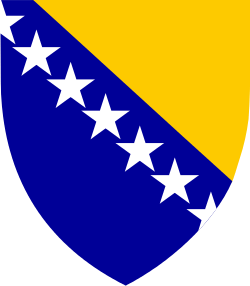 |
|
Ottoman era |
|
Habsburgs |
|
|
This is a history of Bosnia and Herzegovina.
Prehistory and Roman era
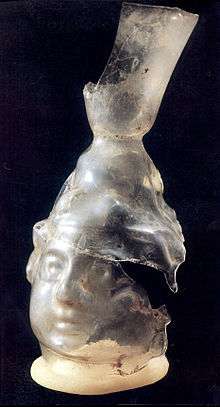
Bosnia has been inhabited at least since Neolithic times. In the late Bronze Age, the Neolithic population was replaced by more warlike Indo-European tribes known as the Illyrians. Celtic migrations in the 4th and 3rd century BCE displaced many Illyrian tribes from their former lands, but some Celtic and Illyrian tribes mixed.[1] Concrete historical evidence for this period is scarce, but overall it appears that the region was populated by a number of different peoples speaking distinct languages.[1]
Christianity had already arrived in the region by the end of the 1st century, and numerous artifacts and objects from the time testify to this. Following events from the years 337 and 395 when the Empire split, Dalmatia and Pannonia were included in the Western Roman Empire. The region was conquered by the Ostrogoths in 455, and further exchanged hands between the Alans and Huns in the years to follow.
Middle Ages
By the 6th century, Emperor Justinian had re-conquered the area for the Byzantine Empire. The Slavs, a migratory people from southeastern Europe, were allied by the Eurasian Avars in the 6th century, and together they invaded the Eastern Roman Empire in the 6th and 7th centuries, settling in what is now Bosnia and Herzegovina and the surrounding lands.[1] More South Slavs came in a second wave, and according to some scholars were invited by Emperor Heraclius to drive the Avars from Dalmatia.[1]
Modern knowledge of Bosnia in the western Balkans during the Dark Ages is patchy. Upon the looter invasions by the Avars and Slavs from 6th-9th century, bringing Slavic languages, both probably gave way to feudalism only with the might by the Frankish penetrating into the region in the late 9th century (Bosnia probably originated as one such pre-feudal entity). It was also around this time that the Bosnians were Christianized. Bosnia, due to its geographic position and terrain, was probably one of the last areas to go through this process, which presumably originated from the urban centers along the Dalmatian coast.[1]
Banate of Bosnia
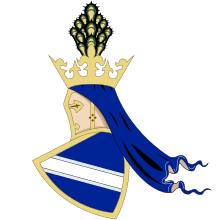

It is only from the 9th century that Frankish and Byzantine sources begin to mention early Slavic polities in the region. In this regard, the earliest widely acknowledged reference to Bosnia dates from the 10th century De Administrando Imperio written by Byzantine emperor Constantine Porphyrogenitus,[2] during which period Bosnia is briefly a part of the short-lived Serbian state of Časlav, after whose death in battle in about 960, much of Bosnia finds itself briefly incorporated into the Croatian state of Krešimir II. Shortly thereafter, in 997, Samuel of Bulgaria marches through Bosnia and asserts his over-lordship in parts of it, however, only to be defeated by the Byzantine Empire in 1018 which annexes Bulgaria and asserts its suzerainty in Bosnia. This lasted until later in the century when some parts of Bosnia are briefly incorporated into Croatia and others into Duklja from which the latter Bosnia appears to have seceded in about 1101, upon which Bosnia's bans tried to rule for themselves. However, they all too often found themselves in a tug-of-war between Hungary and the Byzantine Empire. In the year of 1137, Hungary annexes most of Bosnia, then briefly losing her in 1167 to the Byzantine Empire before regaining her in 1180. Thus, prior to 1180 and the reign of Ban Kulin parts of Bosnia were briefly found in Serb or Croat units, but neither neighbor had held the Bosnians long enough to acquire their loyalty or to impose any serious claim to Bosnia.[3]
The first recorded Ban (viceroy) was Ban Borić, vassal to the Hungarian king. However, he was deposed when he backed the loser in a succession crisis over the Hungarian throne. In 1167, Byzantium reconquered Bosnia and eventually emplaced their own vassal as Ban – the native Ban Kulin (r. 1180-1204). However, this vassalage was largely nominal, and Bosnia had for all practical purposes made itself into an independent state under Kulin.[4] Ban Kulin presided over nearly three decades of peace and stability during which he strengthened the country's economy through treaties with Dubrovnik and Venice. His rule also marked the start of a controversy with the Bosnian Church, an indigenous Christian sect considered heretical by both the Roman Catholic and Eastern Orthodox churches. In response to Hungarian attempts to use church politics regarding the issue as a way to reclaim sovereignty over Bosnia, Kulin held a council of local church leaders to renounce the heresy in 1203. Despite this, Hungarian ambitions remained unchanged long after Kulin's death in 1204, waning only after an unsuccessful invasion in 1254, which also fostered the schism of the Bosnian Church.
Kingdom of Bosnia

Bosnian history from then until the early 14th century was marked by the power struggle between the Šubić and Kotromanić families. This conflict came to an end in 1322, when Stjepan II Kotromanić became ban. By the time of his death in 1353, he had succeeded in annexing territories to the north and west, as well as Zahumlje and parts of Dalmatia. He was succeeded by his nephew Tvrtko who, following a prolonged struggle with nobility and inter-family strife, gained full control of the country in 1367. Under Tvrtko, Bosnia grew in both size and power, finally becoming an independent kingdom in 1377. Following his death in 1391 however, Bosnia fell into a long period of decline. The Ottoman Empire had already started its conquest of Europe and posed a major threat to the Balkans throughout the first half of the 15th century. Finally, after decades of political and social instability, Bosnia officially fell in 1463, while resistance was active and fierce for a few more centuries. Southern regions of Bosnia, nowadays known as "Herzegovina" would follow in 1483, with a Hungarian-backed reinstated "Bosnian Kingdom" being the last to succumb in 1527.
Ottoman Era (1463–1878)
The Ottoman conquest of Bosnia marked a new era in the country's history and introduced tremendous changes in the political and cultural landscape of the region. Although the kingdom had been crushed and its high nobility executed, the Ottomans nonetheless allowed for the preservation of Bosnia's identity by incorporating it as an integral province of the Ottoman Empire with its historical name and territorial integrity - a unique case among subjugated states in the Balkans.[5] Within this sandžak (and eventual vilayet) of Bosnia, the Ottomans introduced a number of key changes in the territory's socio-political administration; including a new landholding system, a reorganization of administrative units, and a complex system of social differentiation by class and religious affiliation.[1]

The four centuries of Ottoman rule also had a drastic impact on Bosnia's population make-up, which changed several times as a result of the empire's conquests, frequent wars with European powers, migrations, and epidemics.[1] A native Slavic-speaking Muslim community emerged and eventually became the largest ethno-religious group[note 1][6] (mainly as a result of a gradually rising number of conversions to Islam),[7] while a significant number of Sephardi Jews arrived following their expulsion from Spain in the late 15th century. The Bosnian Christian communities also experienced major changes. The Bosnian Franciscans (and the Catholic population as a whole) were protected by official imperial decree, although on the ground these guarantees were often disregarded and their numbers dwindled.[1] The Orthodox community in Bosnia, initially confined to Herzegovina and southeastern Bosnia, spread throughout the country during this period and went on to experience relative prosperity until the 19th century.[1] Meanwhile, the native schismatic Bosnian Church disappeared altogether.
As the Ottoman Empire thrived and expanded into Central Europe, Bosnia was relieved of the pressures of being a frontier province and experienced a prolonged period of general welfare and prosperity.[7] A number of cities, such as Sarajevo and Mostar, were established and grew into major regional centers of trade and urban culture. Within these cities, various Sultans and governors financed the construction of many important works of Bosnian architecture (such as the Stari most and Gazi Husrev-beg's Mosque). Furthermore, numerous Bosnians played influential roles in the Ottoman Empire's cultural and political history during this time.[5] Bosnian soldiers formed a large component of the Ottoman ranks in the battles of Mohács and Krbava field, two decisive military victories, while numerous other Bosnians rose through the ranks of the Ottoman military bureaucracy to occupy the highest positions of power in the Empire, including admirals, generals, and grand viziers.[7] Many Bosnians also made a lasting impression on Ottoman culture, emerging as mystics, scholars, and celebrated poets in the Turkish, Arabic, and Persian languages.[7]
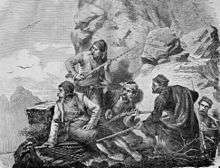
By the late 17th century, however, the Ottoman Empire's military misfortunes caught up with the country, and the conclusion of the Great Turkish War with the Treaty of Karlowitz in 1699 once again made Bosnia the empire's westernmost province. But they allowed some of the Bosnian tribes to immigrate into the Arabian countries (Palestine, Jordan). The following hundred years were marked by further military failures, numerous revolts within Bosnia, and several outbursts of plague.[1]
According to an Ottoman Muslim account of the Austro-Russian–Turkish War (1735–39) translated into English by C. Fraser, Bosnian Muslim women fought in battle since they "acquired the courage of heroes" against the Austrian Germans at the siege of Osterwitch-atyk (Östroviç-i âtık) fortress.[8][9] Bosnian Muslim women and men were among the casualties during the Battle of Osterwitchatyk.[10] Bosnian Muslim women fought in the defense of the fortress of Būzin (Büzin).[11] Women and men resisted the Austrians at the Chetin (Çetin) Fortress.[12] The women of the Bosnians were deemed to be militaristic according to non-Ottoman records of the war between the Ottomans and Austrians and they played a role in the Bosnian success in battle against the Austrian attackers. Yeni Pazar, Izvornik, Östroviç-i âtık, Çetin, Būzin, Gradişka, and Banaluka were struck by the Austrians.[13] A French account described the bravery in battle of Bosnian Muslim women who fought in the war.[14]
The Porte's efforts at modernizing the Ottoman state were met with great hostility in Bosnia, where local aristocrats stood to lose much through the proposed reforms.[1] This, combined with frustrations over political concessions to nascent Christian states in the east, culminated in a famous (albeit ultimately unsuccessful) revolt by Husein Gradaščević in 1831.[7] Related rebellions would be extinguished by 1850, but the situation continued to deteriorate. Later, agrarian unrest eventually sparked the Herzegovinian rebellion, a widespread peasant uprising, in 1875. The conflict rapidly spread and came to involve several Balkan states and Great Powers, which eventually forced the Ottomans to cede administration of the country to Austria-Hungary through the Treaty of Berlin in 1878.[1]
Occupation by Austria-Hungary (1878–1918)
Though an Austria-Hungary military force quickly subjugated initial armed resistance upon take-over, tensions remained in certain parts of the country (particularly Herzegovina) and a mass emigration of predominantly Muslim dissidents occurred.[1] However, a state of relative stability was reached soon enough and Austro-Hungarian authorities were able to embark on a number of social and administrative reforms which intended to make Bosnia and Herzegovina into a "model colony".[5] With the aim of establishing the province as a stable political model that would help dissipate rising South Slav nationalism, Habsburg rule did much to codify laws, to introduce new political practices, and generally to provide for modernization.[5]
Although successful economically, Austro-Hungarian policy - which focused on advocating the ideal of a pluralist and multi-confessional Bosnian nation (largely favored by the Muslims) - failed to curb the rising tides of nationalism.[1] The concept of Croat and Serb nationhood had already spread to Bosnia and Herzegovina's Catholics and Orthodox communities from neighboring Croatia and Serbia in the mid 19th century, and was too well-entrenched to allow for the widespread acceptance of a parallel idea of Bosnian nationhood.[1] By the latter half of the 1910s, nationalism was an integral factor of Bosnian politics, with national political parties corresponding to the three groups dominating elections.
The idea of a unified South Slavic state (typically expected to be spearheaded by independent Serbia) became a popular political ideology in the region at this time, including in Bosnia and Herzegovina.[5] The Austro-Hungarian government's decision to formally annex Bosnia-Herzegovina in 1908 (the Bosnian Crisis) added to a sense of urgency among these nationalists.[5] The political tensions caused by all this culminated on 28 June 1914, when Serb nationalist youth Gavrilo Princip assassinated the heir to the Austro-Hungarian throne, Archduke Franz Ferdinand, in Sarajevo; an event that proved to be the spark that set off World War I. Although 10% of the Bosniak population died serving in the armies or being killed by the various warring states, Bosnia and Herzegovina itself managed to escape the conflict relatively unscathed.[5]
Kingdom of Yugoslavia (1918–41)
Following World War I, Bosnia was incorporated into the South Slav kingdom of Serbs, Croats and Slovenes (soon renamed Yugoslavia). Political life in Bosnia at this time was marked by two major trends: social and economic unrest over the Agrarian Reform of 1918–19 manifested through mass colonization and property confiscation;[15] also formation of several political parties that frequently changed coalitions and alliances with parties in other Yugoslav regions.[5] The dominant ideological conflict of the Yugoslav state, between Croatian regionalism and Serbian centralization, was approached differently by Bosnia's major ethnic groups and was dependent on the overall political atmosphere.[1] Although the initial split of the country into 33 oblasts erased the presence of traditional geographic entities from the map, the efforts of Bosnian politicians such as Mehmed Spaho ensured that the six oblasts carved up from Bosnia and Herzegovina corresponded to the six sanjaks from Ottoman times and, thus, matched the country's traditional boundary as a whole.[1]
The establishment of the Kingdom of Yugoslavia in 1929, however, brought the redrawing of administrative regions into banates that purposely avoided all historical and ethnic lines, removing any trace of a Bosnian entity.[1] Serbo-Croat tensions over the structuring of the Yugoslav state continued, with the concept of a separate Bosnian division receiving little or no consideration. The famous Cvetković-Maček agreement that created the Croatian banate in 1939 encouraged what was essentially a partition of Bosnia between Croatia and Serbia.[7] However, outside political circumstances forced Yugoslav politicians to shift their attention to the rising threat posed by Adolf Hitler's Nazi Germany. Following a period that saw attempts at appeasement, the joining of the Tripartite Pact, and a coup d'état, Yugoslavia was finally invaded by Germany on 6 April 1941.[1]
World War II (1941–1945)
Bosnia was the geographical mother of the partisan movement, providing ample space amongst its mountains for training and development.[16]
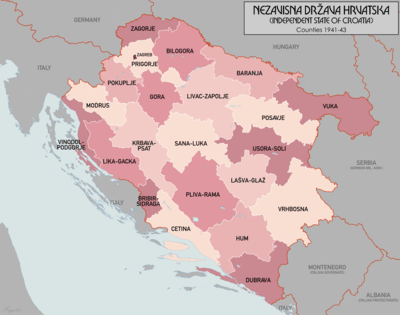
Once the kingdom of Yugoslavia was conquered by Nazi forces in World War II, all of Bosnia was ceded to the Independent State of Croatia (NDH). The NDH rule over Bosnia led to widespread persecution and genocide. The Jewish population was nearly exterminated. Hundreds of thousands of Serbs died either in Ustaše concentration camps or in widespread mass killings by Ustaše militia. Many Serbs themselves took up arms and joined the Chetniks, a Serb nationalist movement with the aim of establishing an ethnically homogeneous 'Greater Serbian' state.[17] The Chetniks were responsible for widespread persecution and murder of non-Serbs and communist sympathizers, with the Muslim population of Bosnia, Herzegovina and Sandžak being a primary target.[18] Once captured, Muslim villages were systematically massacred by the Chetniks.[19] The total estimate of Muslims killed by Chetniks is between 80,000 and 100,000, most likely about 86,000 or 6.7 percent of their population (8.1 percent in Bosnia and Herzegovina alone).[20][21] Several Bosnian Muslim paramilitary units joined the NDH forces to counter their own persecution in the hands of the Serbs in Bosnia. On 12 October 1941 a group of 108 notable Muslim citizens of Sarajevo signed the Resolution of Sarajevo Muslims by which they condemned the persecution of Serbs organized by Ustaše, made distinction between Muslims who participated in such persecutions and the wider Muslim population, presented information about the persecutions of Muslims by Serbs and requested security for all citizens of the country, regardless of their identity.[22] According to the US Holocaust Museum, 320,000-340,000 ethnic Serbs were murdered.[23] According to the Yad Vashem Holocaust Museum and Research Center, "More than 500,000 Serbs were murdered in horribly sadistic ways, 250,000 were expelled, and another 200,000 were forced to convert" during WWII in the Independent State of Croatia (modern day Croatia and Bosnia).[24]
Starting in 1941, Yugoslav communists under the leadership of Josip Broz Tito organized their own multi-ethnic resistance group, the Partisans, who fought against Axis, Ustaše, and Chetnik forces. They too, committed numerous atrocities, mainly against political opponents of all ethnicities. Some Bosnian Muslims joined the SS Handschar division, an SS division of the Nazis that pledged allegiance to both Adolf Hitler and NDH leader, Ante Pavelić. The division was the first SS division which was constituted of non-Germans. On 25 November 1943 the Anti-Fascist Council of National Liberation of Yugoslavia with Tito at its helm held a founding conference in Jajce where Bosnia and Herzegovina was reestablished as a republic within the Yugoslavian federation in its Ottoman borders. Military success eventually prompted the Allies to support the Partisans. On 6 April 1945 Sarajevo was captured by the Partisans. The end of the war resulted in the establishment of the Federal People's Republic of Yugoslavia, with the constitution of 1946 officially making Bosnia and Herzegovina one of six constituent republics in the new state.
Socialist Yugoslavia (1945–1992)
Because of its central geographic position within the Yugoslavian federation, post-war Bosnia was strategically selected as a base for the development of the military defense industry. This contributed to a large concentration of arms and military personnel in Bosnia, a significant factor in the war that followed the breakup of Yugoslavia in the 1990s.[1] However, Bosnia's existence within Yugoslavia was, for the most part, peaceful and prosperous. While it was one of the poorer republics in the early 1950s, Bosnia's economy recovered quickly, as its extensive natural resources were exploited to stimulate industrial development. The Yugoslavian communist doctrine of "brotherhood and unity" particularly suited Bosnia's diverse and multi-ethnic society that, because of such an imposed system of tolerance, thrived culturally and socially.
Though considered a political backwater of the federation for much of the 1950s and 1960s, the 1970s saw the ascension of a strong Bosnian political elite. While working within the communist system, politicians such as Džemal Bijedić, Branko Mikulić and Hamdija Pozderac reinforced and protected the sovereignty of Bosnia and Herzegovina [25] Their efforts proved key during the turbulent period following Tito's death in 1980, and are today considered some of the early steps towards Bosnian independence. However, the republic could not escape the increasingly nationalistic climate of the time unscathed. With the fall of communism and the start of the breakup of Yugoslavia, the old communist doctrine of tolerance began to lose its potency, creating an opportunity for nationalist elements in the society to spread their influence.
Bosnian War (1992–1995)
The first multi-party parliamentary elections held on 18 and 25 November 1990 [26] led to a national assembly dominated by three ethnically-based parties, which had formed a loose coalition to oust the communists from power. Croatia and Slovenia's subsequent declarations of independence and the warfare that ensued placed Bosnia and Herzegovina and its three constituent peoples in an awkward position. A significant split soon developed on the issue of whether to stay with the Yugoslav federation (overwhelmingly favored among Serbs) or seek independence (overwhelmingly favored among Bosniaks and Croats). A declaration of sovereignty on 15 October 1991 was followed by a referendum for independence from Yugoslavia on 29 February and 1 March 1992. The referendum was boycotted by the great majority of Bosnian Serbs, so with a voter turnout of 64%, 98% of which voted in favor of the proposal. Bosnia and Herzegovina became an independent state on 3 March 1992.[1]
While the first casualty of the war is debated, significant Serbian offensives began in March 1992 in Eastern and Northern Bosnia. Following a tense period of escalating tensions the opening shots in the incipient Bosnian conflict were fired when Serb paramilitary forces attacked Bosniak villages around Čapljina on 7 March 1992 and around Bosanski Brod and Goražde on 15 March. These minor attacks were followed by much more serious Serb artillery attacks on Neum on 19 March and on Bosanski Brod on 24 March. The killing of a Bosniak civilian woman on 5 April 1992 by a sniper, while she was demonstrating in Sarajevo against the raising of barricades by Bosnian Serbs, is widely regarded as marking the start of warfare between the three major communities.[26] Open warfare began in Sarajevo on 6 April.[1] International recognition of Bosnia and Herzegovina meant that the Yugoslav People's Army (JNA) officially withdrew from the republic's territory, although their Bosnian Serb members merely joined the Army of Republika Srpska. Armed and equipped from JNA stockpiles in Bosnia, supported by volunteers, Republika Srpska's offensives in 1992 managed to place much of the country under its control.[1] By 1993, when an armed conflict erupted between the Sarajevo government and the Croat statelet of Herzeg-Bosnia, about 70% of the country was controlled by the Serbs.[5]

In March 1994, the signing of the Washington accords between the Bosniak and ethnic-Croatian leaders led to the creation of a joint Bosniak-Croat Federation of Bosnia and Herzegovina. This, along with international outrage at Serb war crimes and atrocities (most notably the Srebrenica massacre of as many as 8,000 Bosniak males in July 1995[27]) helped turn the tide of war. The signing of the Dayton Agreement in Paris by the presidents of Bosnia and Herzegovina (Alija Izetbegović), Croatia (Franjo Tuđman), and Yugoslavia (Slobodan Milošević) brought a halt to the fighting, roughly establishing the basic structure of the present-day state. The three years of war and bloodshed had left between 90,000 and 110,000 people killed and more than 2 million displaced.[28]
Independent Bosnia and Herzegovina (1995–present)
Since its 1992 independence and the 1995 Constitutional framework of the Dayton Agreement, Bosnia and Herzegovina has followed a path of state-building, while remaining under final international supervision through the figure of the High Representative for Bosnia and Herzegovina. Bosnia and Herzegovina is a federation of two Entities - the Federation of Bosnia and Herzegovina and the Republika Srpska, as well as the district of Brčko. Each of the Entities has its own Constitution and extensive legislative powers.
Bosnia and Herzegovina is a potential candidate country for accession into the EU; the EU-BiH Stabilization and Association Agreement (SAA) was signed in 2008 and entered into force in June 2015. Bosnia and Herzegovina submitted its formal application for EU membership on 15 February 2016; the EU Council conditioned its consideration to further progress on the implementation of the Reform Agenda, as well as to the adaptation of the SAA to take into account the EU accession of Croatia, and to an agreement on a functioning Coordination Mechanism on EU matters. These conditions were fulfilled by the Summer 2016.
The accession of Bosnia and Herzegovina to NATO is in the negotiation phase, and a Membership Action Plan was signed in April 2010. It requires Bosnia and Herzegovina to define the issue of property over defence assets before NATO may consider the next steps. Bosnian political parties have different attitudes towards NATO: while Bosniak and Bosnian Croat parties support it, Bosnian Serb parties are more cautious and, while not opposing it in principle, require it to be put to a referendum first.

On 4 February 2014, the protests against the government of the Federation of Bosnia and Herzegovina, one of the country's two entities, dubbed the Bosnian Spring, the name being taken from the Arab Spring, began in the northern town of Tuzla. Workers from several factories which were privatised and which have now gone bankrupt united to demand action over jobs, unpaid salaries and pensions.[29] Soon protests spread to the rest of the Federation, with violent clashes reported in close to 20 towns, the biggest of which were Sarajevo, Zenica, Mostar, Bihać, Brčko and Tuzla.[30] The Bosnian news media reported that hundreds of people had been injured during the protests, including dozens of police officers, with bursts of violence in Sarajevo, in the northern city of Tuzla, in Mostar in the south, and in Zenica in central Bosnia. The same level of unrest or activism did not occur in the Republika Srpska, but hundreds of people also gathered in support of protests in the town of Banja Luka against its separate government.[31][32][33] The protests marked the largest outbreak of public anger over high unemployment and two decades of political inertia in the country since the end of the Bosnian War in 1995.[34]
See also
- League of Communists of Yugoslavia
- President of Bosnia and Herzegovina
- List of Prime Ministers of Bosnia and Herzegovina
- List of heads of state of Yugoslavia
- List of Prime Ministers of Yugoslavia
- Politics of Bosnia and Herzegovina
- Republika Srpska
- 2014 unrest in Bosnia and Herzegovina
- 2014 Bosnia and Herzegovina floods
References
- 1 2 3 4 5 6 7 8 9 10 11 12 13 14 15 16 17 18 19 20 21 22 23 Malcolm, Noel (1994). Bosnia A Short History. New York University Press. ISBN 0-8147-5520-8.
- ↑ Malcolm 1996, p. 10.
- ↑ John V.A. Fine and Robert J. Donia (1994). Bosnia and Hercegovina: A Tradition Betrayed. Columbia University Press. pp. 14–16.
- ↑ John Van Antwerp Fine (1994). The Late Medieval Balkans: Critical Survey from the Late Twelfth Century to the Ottoman Conquest. University of Michigan press. p. 44.
- 1 2 3 4 5 6 7 8 9 Riedlmayer, Andras (1993). A Brief History of Bosnia-Herzegovina. The Bosnian Manuscript Ingathering Project.
- ↑ Malcolm 1995, p. 71.
- 1 2 3 4 5 6 Imamović, Mustafa (1996). Historija Bošnjaka. Sarajevo: BZK Preporod. ISBN 9958-815-00-1
- ↑ Oriental Translation Fund (1830). Publications. pp. 17–.
- ↑ Michael Robert Hickok (1997). Ottoman Military Administration in Eighteenth-Century Bosnia. BRILL. pp. 15–. ISBN 90-04-10689-8.
- ↑ Michael Robert Hickok (1995). Looking for the Doctor's Son: Ottoman Administration of 18th Century Bosnia. University of Michigan. p. 34.
- ↑ An International Symposium "South-Eastern Europe 1918–995" Serbian Land Reform and Colonization in 1918
- ↑ Basil Davidson: PARTISAN PICTURE
- ↑ Ramet, Sabrina P. (2006). The Three Yugoslavias: State-Building and Legitimation, 1918–2005. Bloomington: Indiana University Press. p. 145. ISBN 978-0-253-34656-8.
- ↑ Tomasevich, Jozo (1975). War and Revolution in Yugoslavia, 1941–1945: The Chetniks. Stanford: Stanford University Press. pp. 256–261. ISBN 978-0-8047-0857-9.
- ↑ Hoare, Marko Attila (2006). Genocide and Resistance in Hitler's Bosnia: The Partisans and the Chetniks 1941–1943. New York: Oxford University Press. p. 143. ISBN 978-0-19-726380-8.
- ↑ Mojzes, Paul (2011). Balkan Genocides: Holocaust and Ethnic Cleansing in the Twentieth Century. Lanham, Maryland: Rowman & Littlefield. p. 98. ISBN 978-1442206632.
- ↑ Gerard Toal, Carl T. Dahlman (2011). Bosnia Remade: Ethnic Cleansing and Its Reversal. Oxford: Oxford University Press. p. 26. ISBN 978-0199730360.
- ↑ Hadžijahić, Muhamed (1973), "Muslimanske rezolucije iz 1941 godine [Muslim resolutions of 1941]", Istorija Naroda Bosne i Hercegovine (in Serbo-Croatian), Sarajevo: Institut za istoriju radničkog pokreta, p. 277
- ↑ US Holocaust Museum, ushmm. "Jasenovac". US Holocaust Museum.
- ↑ "Independent State of Croatia" (PDF). Yad Vashem Holocaust Museum and Research Center.
- ↑ Stojic, Mile (2005). Branko Mikulic - socialist emperor manqué. BH Dani
- 1 2 http://phron.org/Reference/Books/Balkans%20-%20post%20communist%20history.pdf
- ↑ Federal Commission for Missing Persons; "Preliminary List of Missing and Killed in Srebrenica"; 2005 "". External link in
|title=(help); (522 KB). - ↑ November. 21, 2005. Bosnian war "claimed 100,000 lives". Deutsche Presse-Agentur.
- ↑ "Bosnian protests: A Balkan Spring?". bbc.co.uk. 8 February 2014. Retrieved 8 February 2014.
- ↑ "Građanski bunt u BiH". klix.ba. 8 February 2014. Archived from the original on 7 February 2014. Retrieved 8 February 2014.
- ↑ Bilefsky, Dan (8 February 2014). "Protests Over Government and Economy Roil Bosnia". nytimes.com. Retrieved 8 February 2014.
- ↑ "Bosnian Protesters Torch Government Buildings In Sarajevo, Tuzla". rferl.org. 8 February 2014. Retrieved 8 February 2014.
- ↑ "Bosnia-Hercegovina protests break out in violence". bbc.co.uk. 8 February 2014. Retrieved 8 February 2014.
- ↑ "Bosnian protesters storm government buildings". smh.com.au. 8 February 2014. Retrieved 8 February 2014.
Notes
- ↑ By the early 1600s, approximately 450,000 Muslims (67%), 150,000 Catholics (22%) and 75,000 Orthodox Christians (11%) lived Bosnia (Malcolm, 1995)
Further reading
- Bataković, Dušan T. (1996). The Serbs of Bosnia & Herzegovina: History and Politics. Dialogue Association.
- Marko Attila Hoare (2007). The History of Bosnia: From the Middle Ages to the Present Day. Saqi. ISBN 978-0-86356-953-1.
- Markus Koller; Kemal H. Karpat (2004). Ottoman Bosnia: A History in Peril. University of Wisconsin Press. ISBN 978-0-299-20714-4.
- Noel Malcolm (2002). Bosnia: A Short History. Pan. ISBN 978-0-330-41244-5.
- Matthew Parish, A Free City in the Balkans: Reconstructing a Divided Society in Bosnia, London: I.B.Tauris, 2009
- Ed Vulliamy, The War is Dead, Long Live the War: Bosnia: the Reckoning Bodley Head (London 19 April 2012) ISBN 978-1-84792-194-9
External links
General history
- Oriental Institute Sarajevo
- Bosniak Institute Sarajevo
- Bosnian Institute
- Selected Bibliography of English-language Print Resources for Bosnia and Herzegovina at Yale University Library (Excellent web source)
- General sources for the study of Bosnian Civilization
- Brief history of Bosnia and Herzegovina
- History of Bosnia and Herzegovina: Primary Documents
- A Brief History of Bosnia-Herzegovina by Andras Riedlmayer, Harvard University
- WWW-VL: History: Bosnia & Herzegovina
- Timeline: Bosnia-Hercegovina at BBC News
Bosnian War and post-war history
- John K. Cox: Teaching about Conflict and Crisis in the Former Yugoslavia: The Case of Bosnia-Hercegovina
- TIME Daily short timeline of Bosnian conflict
- OHR ethnic maps of Bosnia and Herzegovina
- Washington Post: An overview of war
- Bosnia: a single country or an apple of discord?, Bosnian Institute, 12 May 2006
| Wikimedia Commons has media related to History of Bosnia and Herzegovina. |